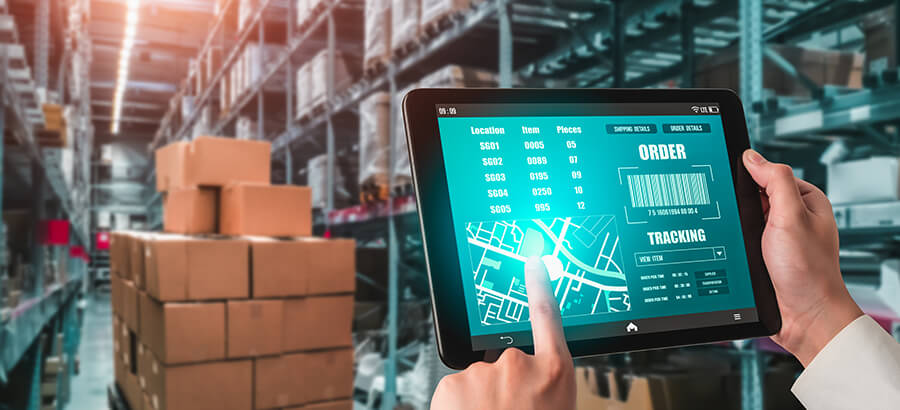Several years ago, only the bravest and most ambitious enterprises embarked on the digital transformation journey, today the industry landscape has changed. Now digitalization of manufacturing and distribution supply chain processes has become imperative, especially after the pandemic, which caused disruptions and revealed multiple gaps and weaknesses in the global supply chain.
To compete in this constantly changing market, manufacturers and distributors need more digital-driven services such as real-time production, tracking, and analysis. This means making factories smarter for the future. In the Fictiv 2021 State of Manufacturing Report 95% of industry leaders acknowledged that digital transformation is necessary for their company’s development and success. However, many manufacturers and distributors don’t know where to start and how to structure their approach to embark on the journey to digital transformation.
Here’s a look into the smart factory and the steps to start the path to one taking advantage of the benefits technology can offer.
What is the smart factory?
The smart factory is an interconnected network of machines, communication mechanisms, computing platforms that uses advanced technologies such as artificial intelligence (AI) and machine learning to analyze data, drive automated processes and learn as it goes. The smart factory can help manufacturers and distributors improve performance efficiency and effectiveness in a dynamic, digital world. As digital initiatives like machine learning, connected services, IoT, AI, big data, bots, cloud connectivity, mobility, and socialization ramp up within your organization, there are almost infinite possibilities to scale, modify, and adapt as needed.
How to create a smart factory
It’s important to first to set objectives. Where does your factory need to make improvements? Where do you need to start? What are the current operational pain points? What does the future look like? Some of these questions will assist with what areas or technology you would need to start with to drive value for your unique organization.
For manufacturers and distributors, there are three key transitional steps towards the smart factory:
1. The first step is digitization. Digitization means converting something into a digital format, and usually refers to encoding data and documents. Only necessary information which will be utilized needs to be digitized.
2. The next thing manufacturers and distributors would need to implement is digitalization. Digitalization means the use of digital technologies to change business processes to provide new value producing opportunities or cost efficiencies. In this phase we begin to see the digital transformation to improve factory operations and efficiency. This could include:
- Machine, factory, and system connectivity: For example, manual packing, labeling, and stacking is now done by a packing robot that receives instructions through software on how to pack, stack and label.
- IoT and automatic data collection: The traditional factory can move away from recording production time on isolated applications or paper which gives an inaccurate analysis. The use of a centralized system where speed and quantities are automatically recorded to be viewed on one centralized platform. Your factory floor can become a circuit of machines producing products, checking for quality, ordering new parts, booking maintenance services and scheduling for distribution.
- AI (Artificial Intelligence) capabilities: Manufacturers and distributors can fully automate production optimization through AI. They can move from planning on whiteboards and have this on a fully automated system to increase accuracy and minimize missed deadlines.
3. The next and final phase is where we see a fully integrated supply chain. This involves connected monitors and sensors – meaning that they communicate with each other and your central data system is used to collect data on many aspects of your processes.
The core of the smart factory is the consistent use of data. Through sensor technology and networking, data is continuously collected, increasing transparency and productivity, making knowledge available, and enabling manufacturers and distributors to analyze and forecast. An ERP system will allow for this data-driven decision making with a real-time view of the supply chain. At a basic level, the rollout of Shop Floor Data Collection is regarded as one of the cornerstones of the Industry 4.0 initiative. It involves the real-time tracking of jobs against schedule and identification of any delays, typical defect levels against normal, and machine performance against tolerance levels to name a few examples.
Benefits of the smart factory
The smart factory can yield numerous benefits for manufacturers and distributors and this includes:
- Real-time, on-demand visibility into performance: Smart factories enable real-time monitoring and adjustments at the finest levels, ensuring that quality is more consistent thanks to equipment that now operates at peak performance more often. There is also improved tracking of jobs and delays which leads to better customer service.
- Improved production: Overall processes and operations are improved due to flexible, adaptive, and proactive production.
- Increased customization: By investing in digital transformation, manufacturers and distributors will offer customized options to customers while remaining competitive and driving continued mass production.
- Lower costs: Data analytics can help your organization identify opportunities for cost reduction, such as inventory management in supply and demand, and can also allow you to make quick tweaks to products and services without withholding production.
Challenges in the digital transformation journey
It is important that manufacturers and distributors note that for digital transformation to take place, it requires financial investment, changes within IT infrastructure, changes in business processes, and training of new skills within the workforce that organizations need to plan for and consider before embarking on this journey. Industries should not be distracted by ‘shiny new technology’ but focus on getting the basics right and identifying and liberating the value in the data they already have.
How to prepare for successful digital transformation
Beyond investing in the correct foundational technology, the key to successfully evolving into a smart factory lies in the overall business strategy. By understanding the business vision and developing a digital transformation roadmap, a manufacturer or distributor can find cost-saving value in their operations and generate new revenue streams from their customers. For many organizations, adoptions of these technologies involve breaking traditional boundaries between different functions, recruiting new skills and transforming activities into flexible and continuous processes. There is no need to digitalize every single business process, the key is to find the critical areas and start with those, even if you have to approach it in a phased approach and start small. The cumulative effect of small changes leads to significant outcomes over time. Deliver digital transformation one building block at a time, and if this is done right the evolution towards a smart factory can position the organization for long-term success.







